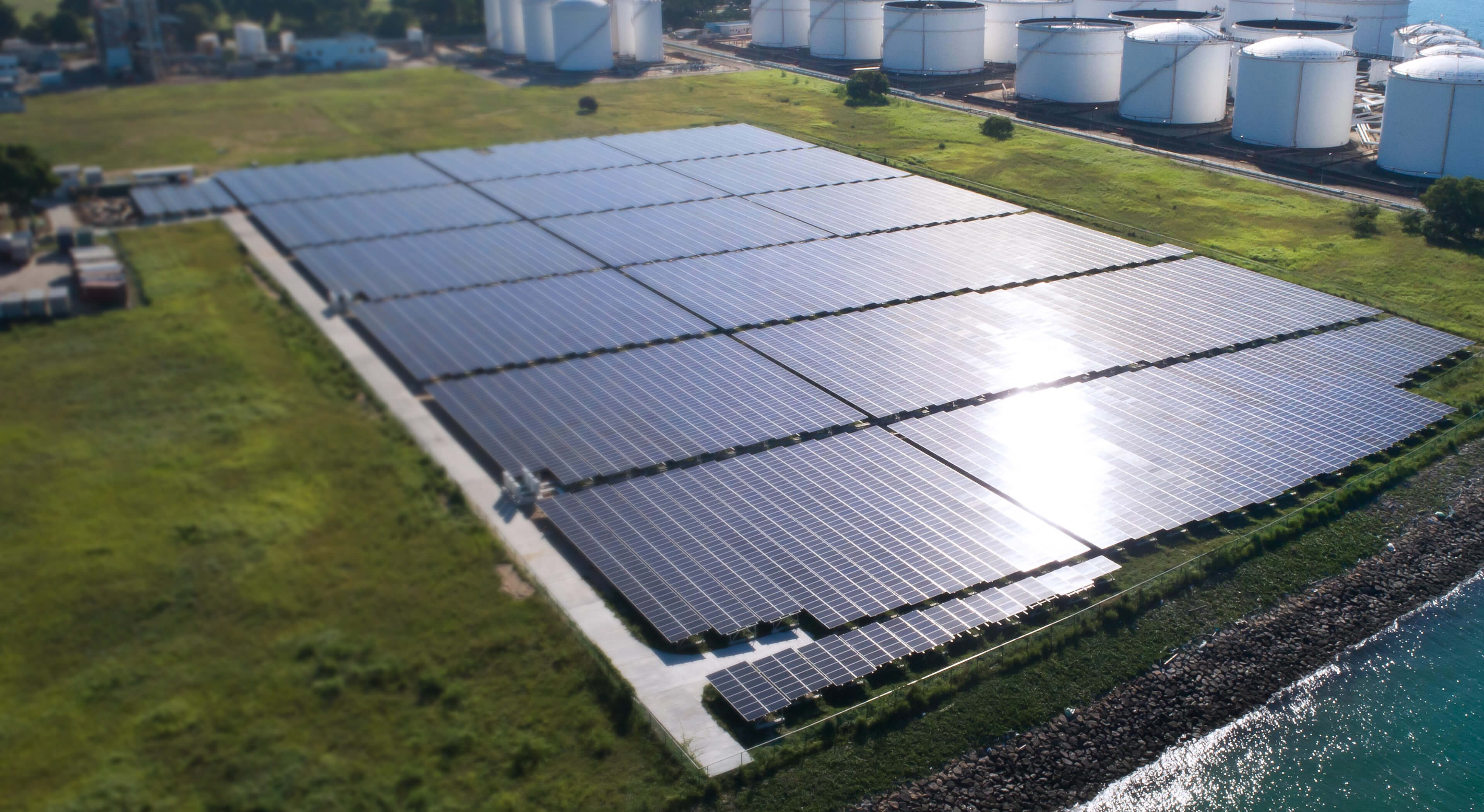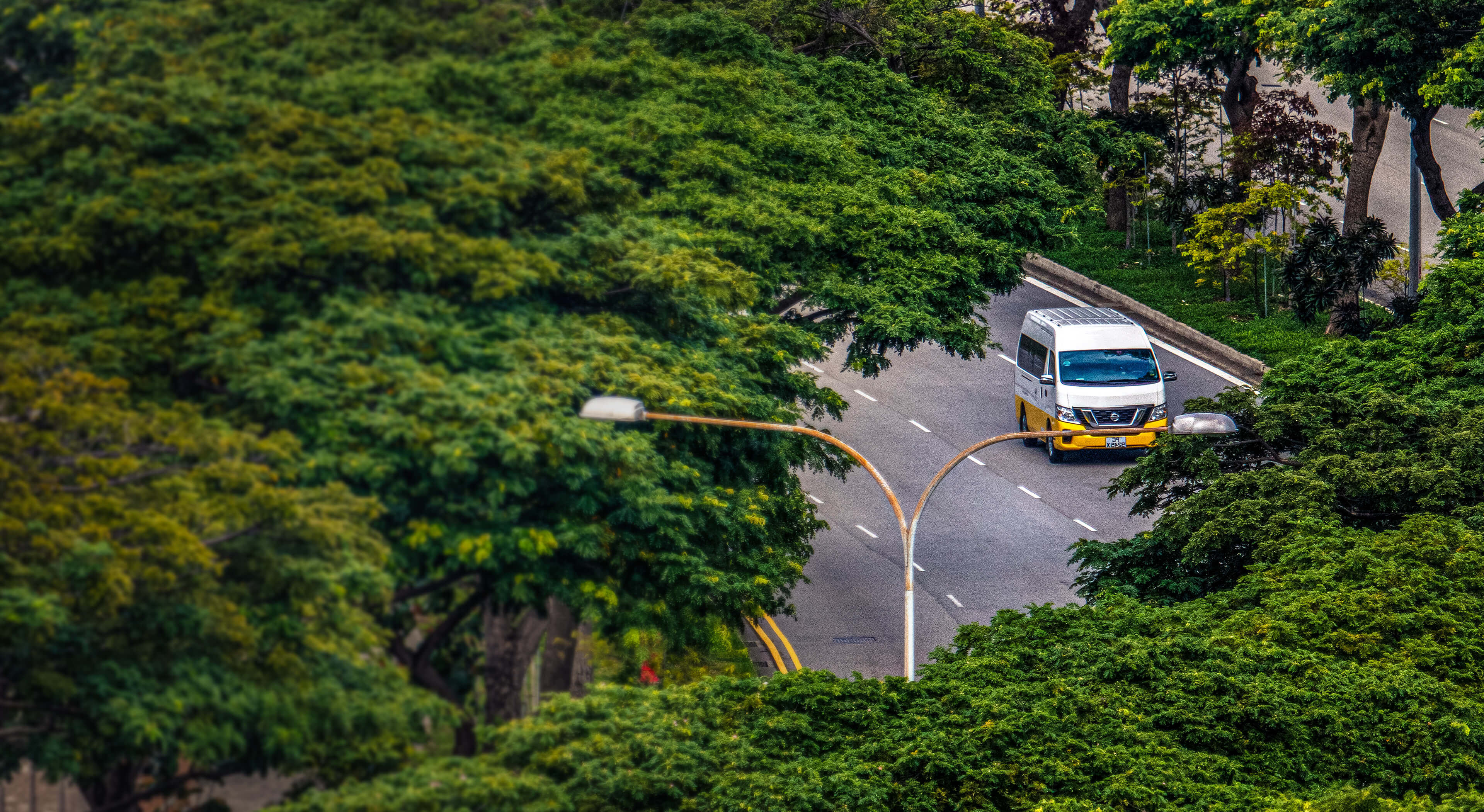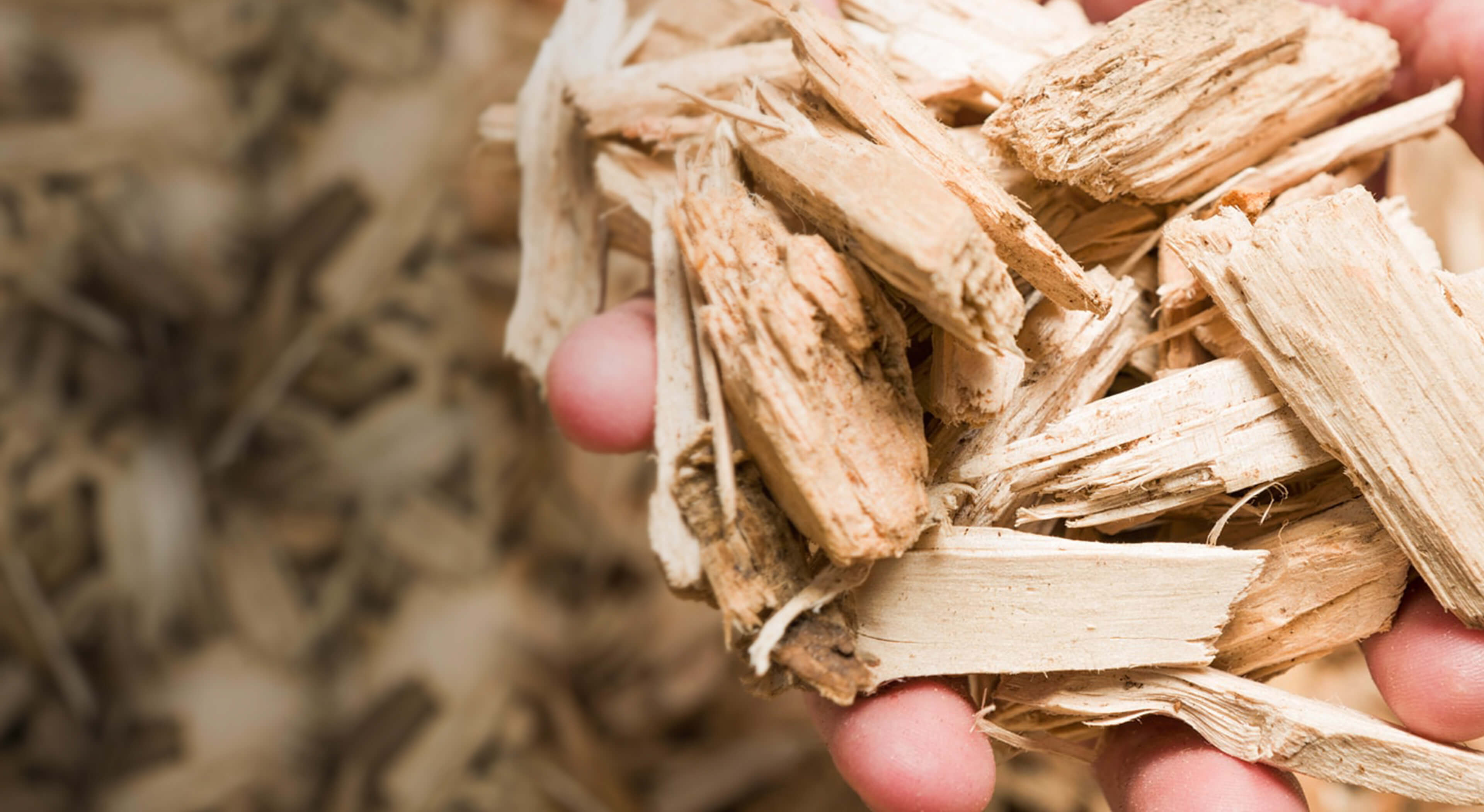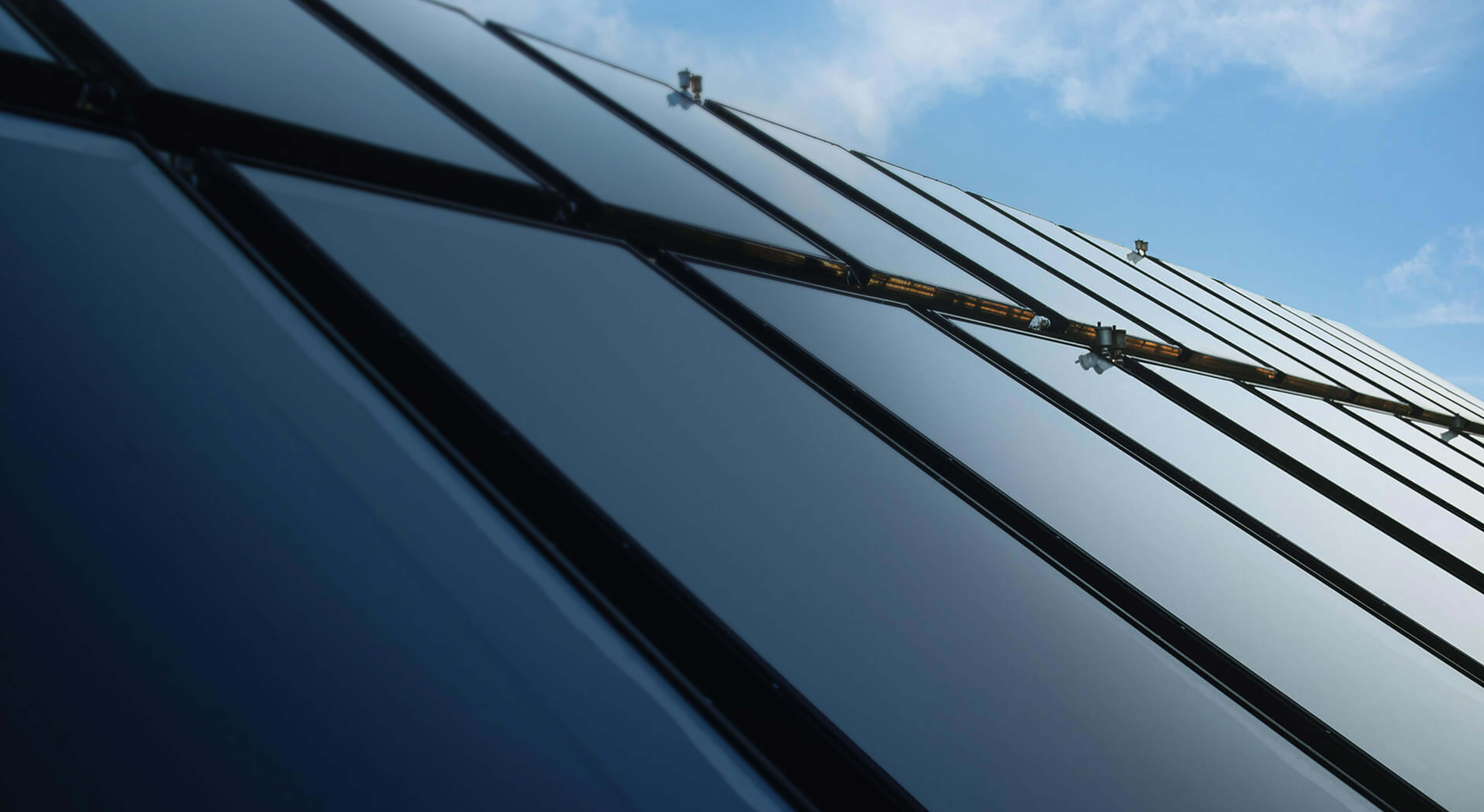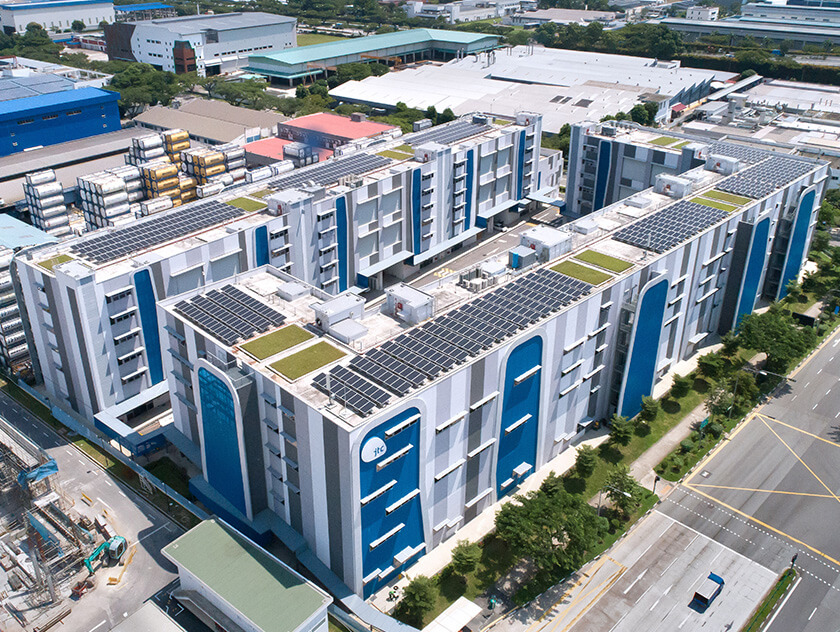
Our Commitment and Goals
Meeting global standards in sustainable development.
Affordable and clean energy Industry, innovation and infrastructure Sustainable cities and communities Climate action
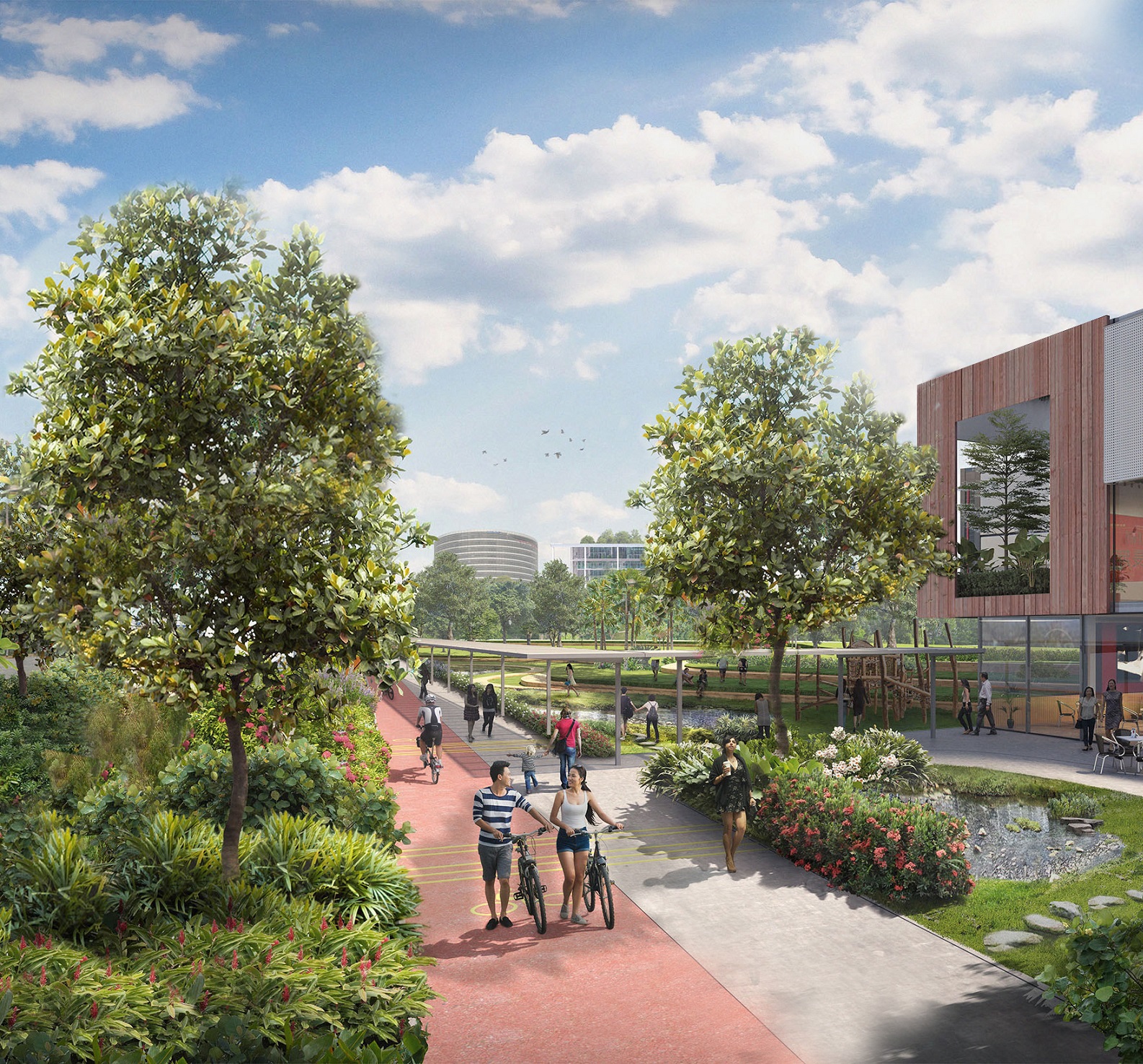
Our development projects undergo an evaluation process that addresses their potential impact on traffic, public health and safety, heritage, and the environment.
For development projects close to sensitive areas or as required by the relevant authorities, detailed environmental studies will be carried out, as they provide important biodiversity considerations to inform how we can plan and develop our estates sustainably. Technical agencies, nature groups and community stakeholders are consulted on the findings from our environmental studies, including the extent of potential impact and the proposed mitigation measures to be implemented.
Our environmental study reports are also published online for the public to provide their feedback.
As the Public Sector Centre of Excellence for Building and Infrastructure, we are always looking at ways to help our communities build and operate more sustainably. That’s why we developed the Singapore Building Carbon Calculator (SBCC) – Singapore’s first localised, web-based embodied carbon calculator.
This collaborative, free-to-use tool will enable developers to easily track the carbon footprint of their buildings’ materials. It’s one of the ways we’re helping to shape a greener Singapore.
Initiatives and Programmes
Sustainability is at the core of our work.
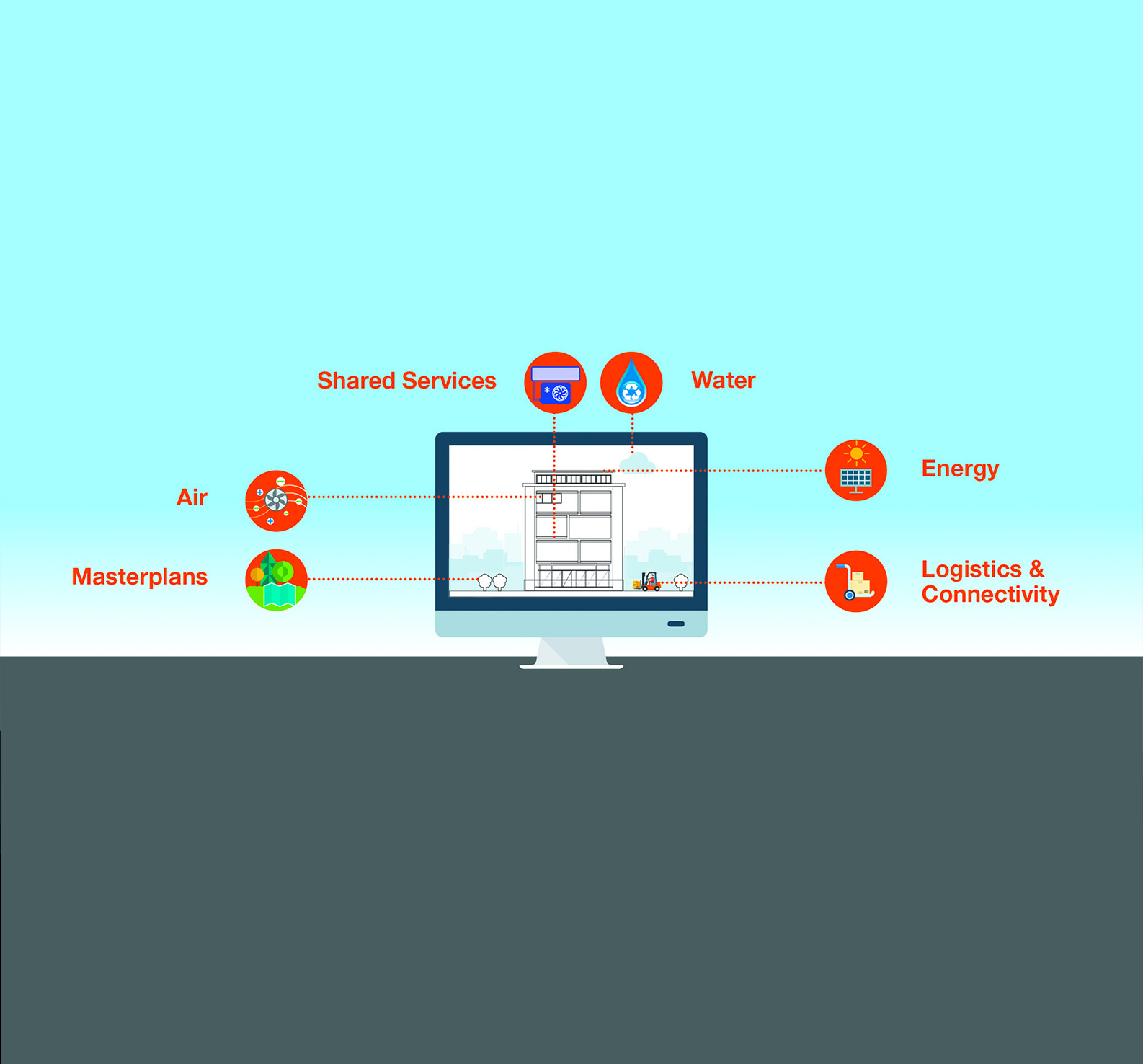
Phase 1: Planning
- Development plans are aligned with our sustainability commitments
- Green and blue master plans are formulated to balance biodiversity with commercial needs
- Logistics and connectivity infrastructure are designed to reduce emissions, allowing for vehicle-lite environments
- Buildings are designed to reduce energy and water consumption, with architectural features that cut air-conditioning needs and maximise water recycling
- Shared services are integrated into our developments to improve efficient use of resources
- Developments are designed to be solar-ready and clean energy-friendly
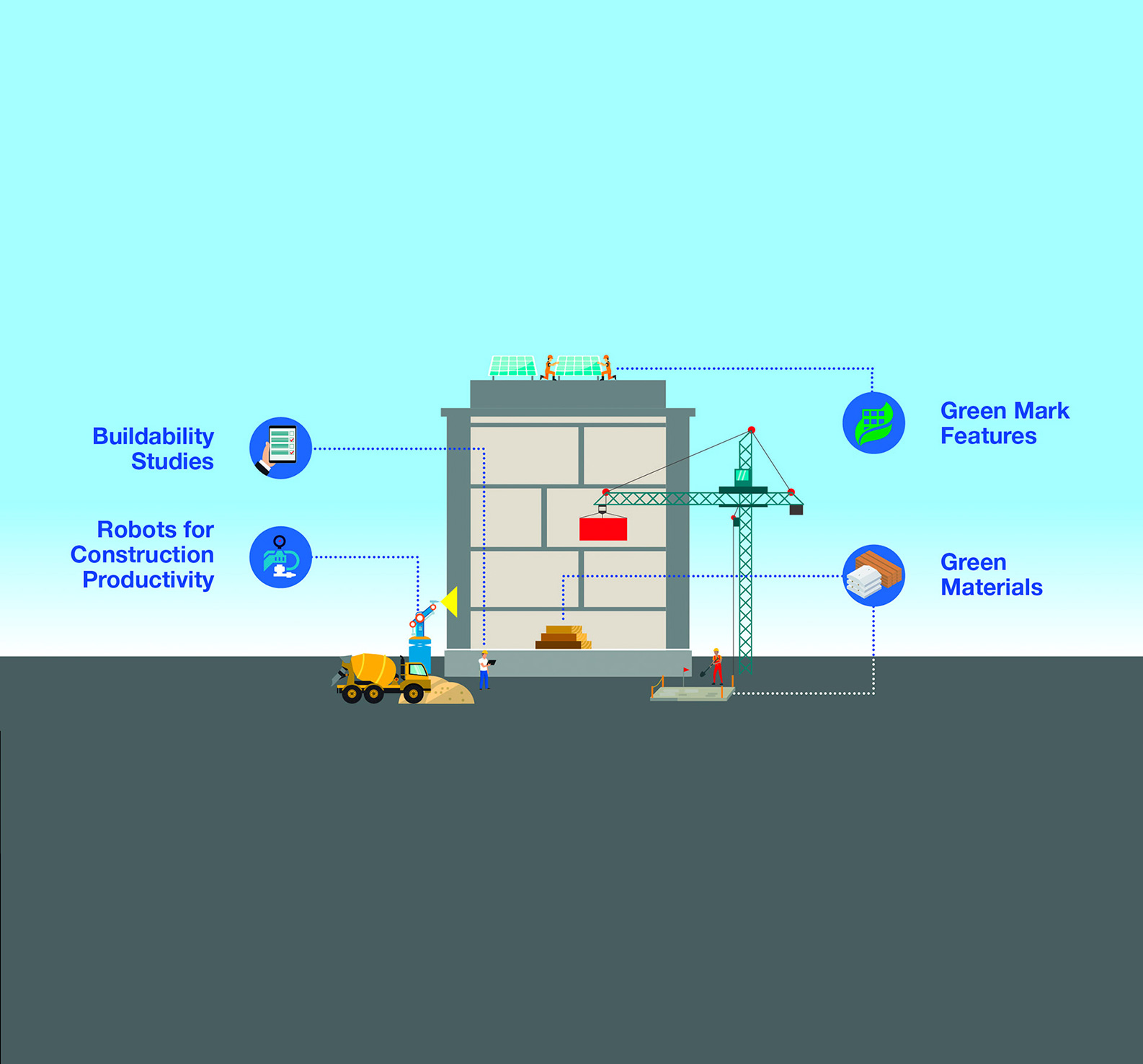
Phase 2: Design and construction
- Technology and global best practices are used to ensure developments are built safely, efficiently and sustainably
- Before construction begins, virtual design and construction are used to minimise resource wastage and potentially dangerous activities on site
- At construction sites, robots such as PictoBot and Quicabot are used together with green building materials to improve productivity and safety while lowering maintenance needs
- Green Mark features are also included in blueprints to ensure all districts and developments meet at least a Green Mark Certification
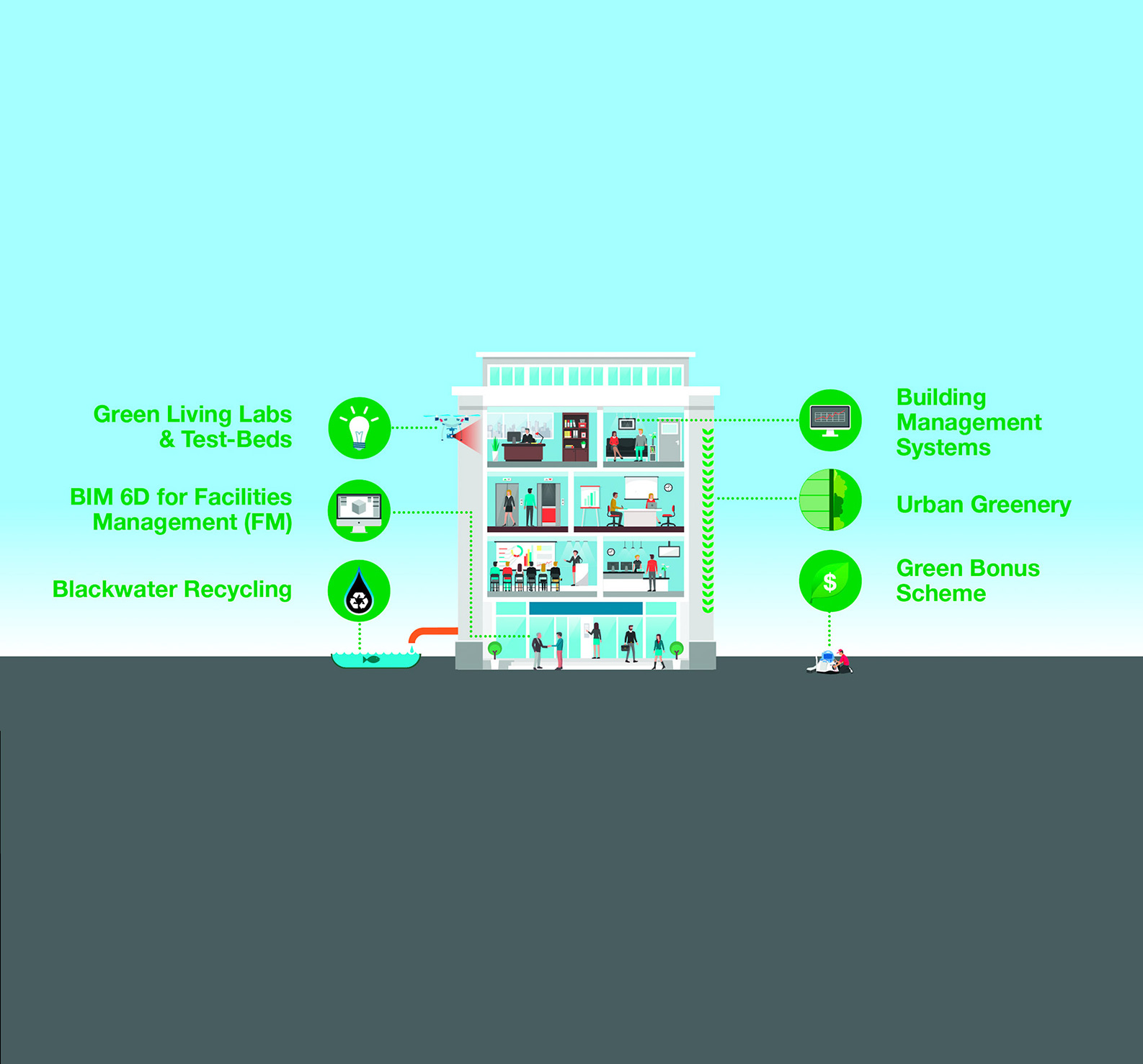
Phase 3: Operations
- Design features such as urban greenery and blackwater recycling facilities are incorporated from the outset to insulate against heat (thus reduce cooling needs) and to cut wastewater
- 6D Building Information Modelling (BIM) is used to lay out developments, thereby ensuring facilities management can be done efficiently
- Through the Green Bonus Scheme, facilities management partners are encouraged to adopt sustainable practices
- New solutions are simultaneously sought from external parties through the JTC Innovation Challenge, with our estates serving as living labs and test beds
- Integrated estates and building management systems help monitor, analyse and optimise operations, increasing resource efficiency for our developments
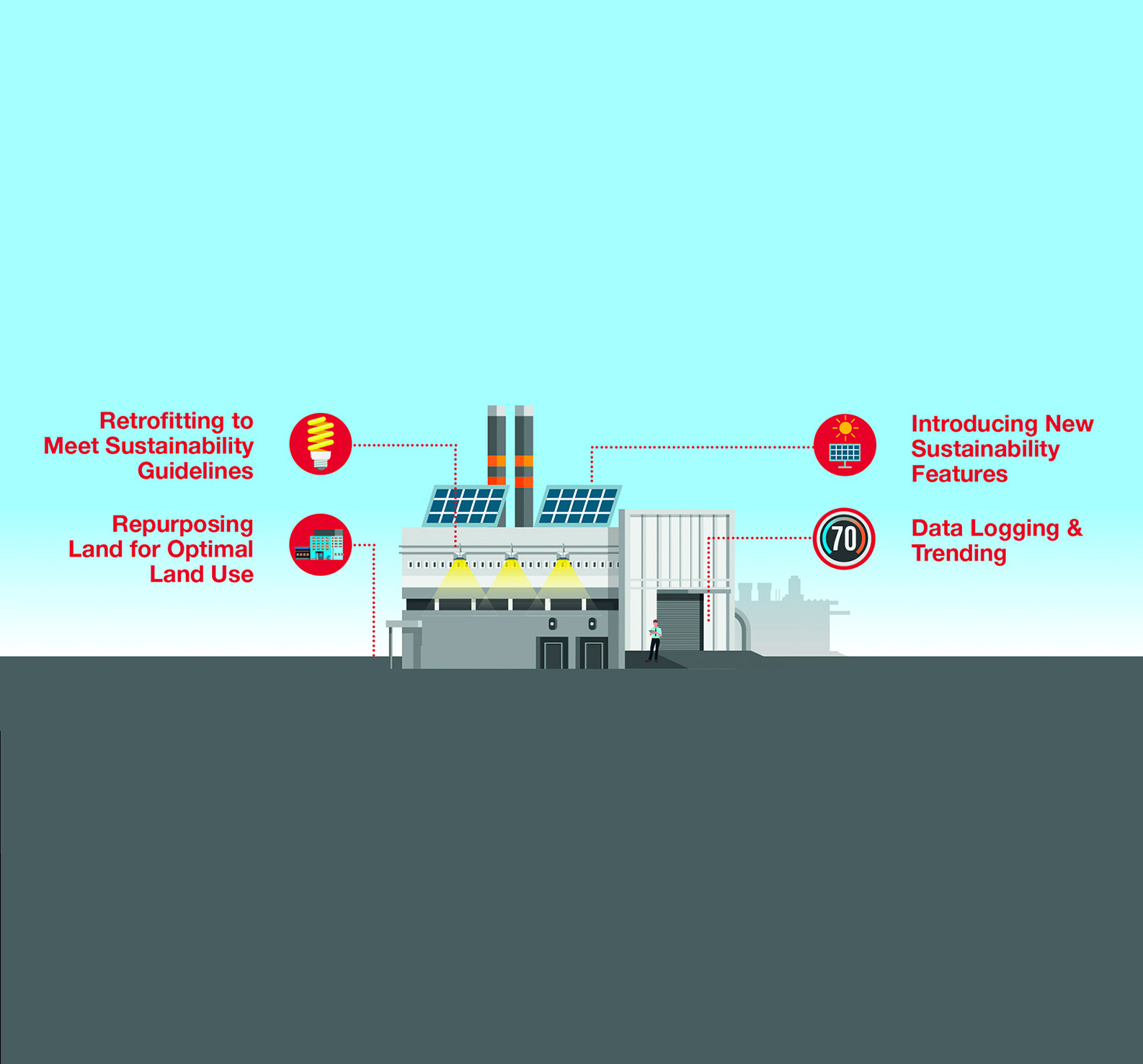
Phase 4: Rejuvenation
- Aging buildings are rejuvenated or replaced to ensure better use of Singapore’s limited land and natural resources
- Data analytics is used to study occupancy and movement behaviour. It also helps us optimise lighting and cooling levels to reduce energy wastage
- Older buildings are retrofitted with new features (solar panels, low-emissivity glass and smart sensors, etc.) so that they too will meet our high sustainability standards
- Where necessary, mature developments and estates are repurposed to become more productive, efficient and future-ready spaces
